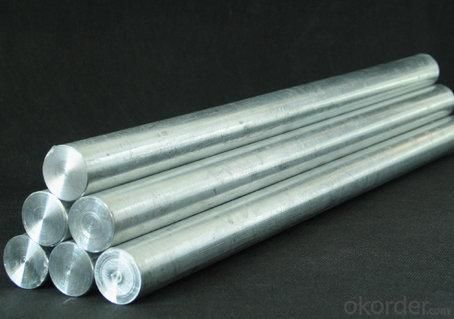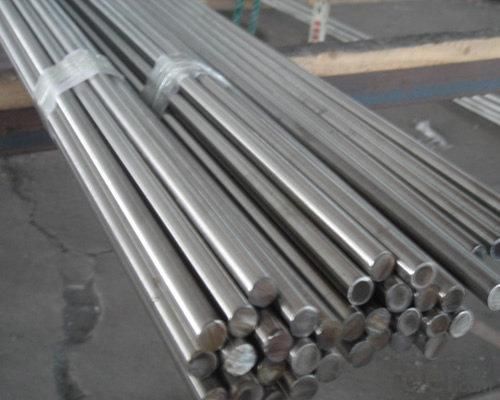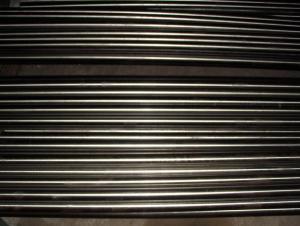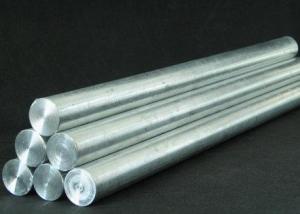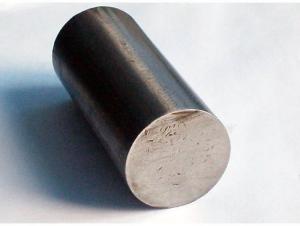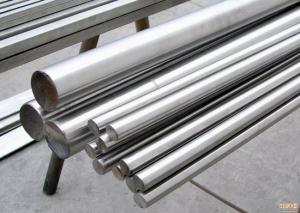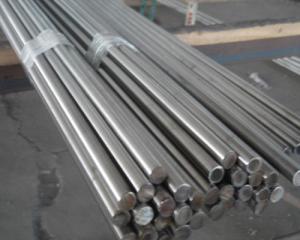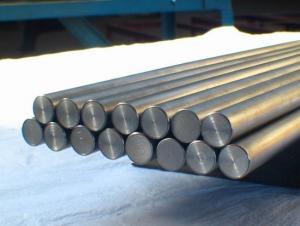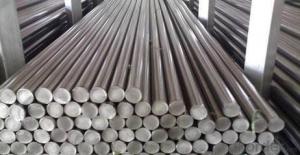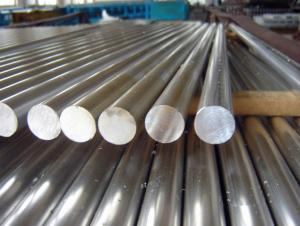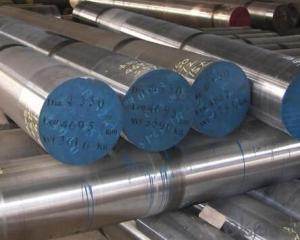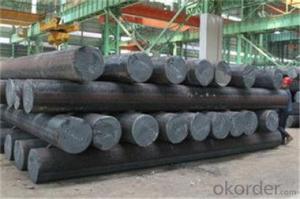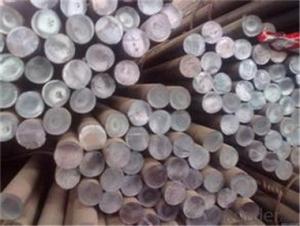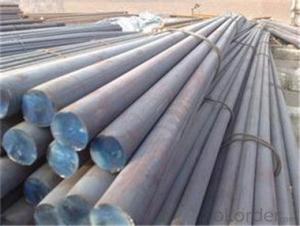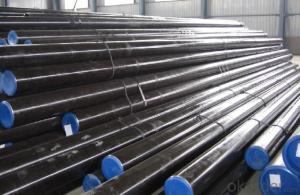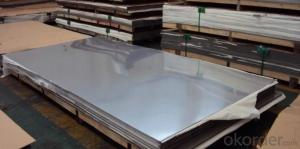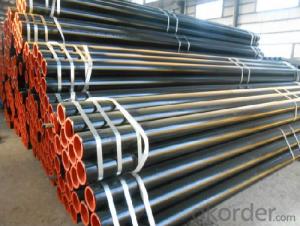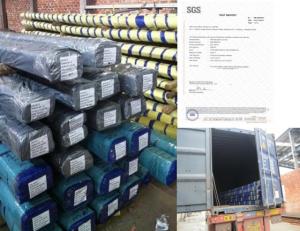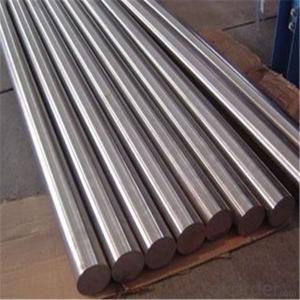Stainless Steel Round Bar
- Loading Port:
- China Main Port
- Payment Terms:
- TT or LC
- Min Order Qty:
- 5 Tons m.t.
- Supply Capability:
- 1000 Tons Per Month m.t./month
OKorder Service Pledge
OKorder Financial Service
You Might Also Like
Stainless Steel Bar
Stainless Steel Round Bright Bar
Hot-rolled Stainless Steel Black Bar
Grades:201、202、301、302、303、304、316、316L、321 etc
|
Diameter (mm) |
weight (kg/m) |
Diameter (mm) |
weight (kg/m) |
Diameter (mm) |
weight (kg/m) |
Diameter (mm) |
weight (kg/m) |
|
2 |
0.025 |
14 |
1.221 |
30 |
5.607 |
50 |
15.575 |
|
3 |
0.056 |
15 |
1.402 |
32 |
6.38 |
55 |
18.846 |
|
4 |
0.1 |
16 |
1.595 |
34 |
7.202 |
60 |
22.428 |
|
5 |
0.156 |
18 |
2.019 |
35 |
7.632 |
65 |
26.322 |
|
6 |
0.224 |
19 |
2.249 |
36 |
8.074 |
70 |
30.527 |
|
7 |
0.305 |
20 |
2.492 |
38 |
8.996 |
75 |
35.044 |
|
8 |
0.399 |
22 |
3.015 |
40 |
9.968 |
80 |
39.872 |
|
9 |
0.505 |
24 |
3.588 |
42 |
10.99 |
85 |
45.012 |
|
10 |
0.623 |
25 |
3.894 |
45 |
12.616 |
90 |
50.463 |
|
11 |
0.754 |
27 |
4.542 |
46 |
13.183 |
95 |
56.226 |
|
12 |
0.897 |
28 |
4.884 |
48 |
14.354 |
100 |
62.3 |
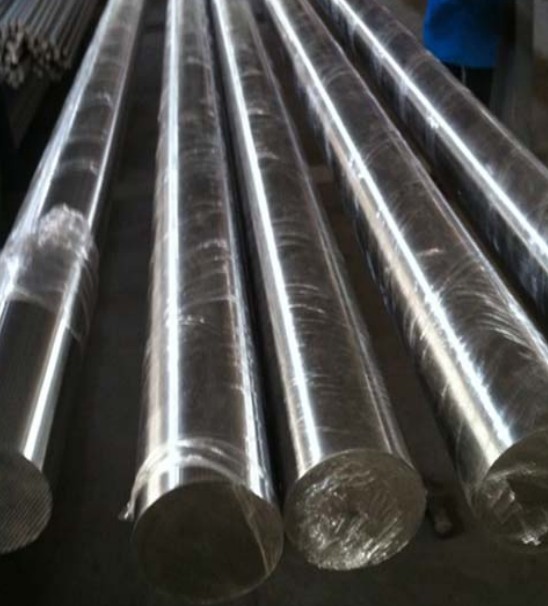
- Q: 303 stainless steel bars for medical products?
- Model 301- has good ductility and is used for molding products. It can also be hardened rapidly by mechanical processing. Good weldability. The abrasion resistance and fatigue strength are better than 304 stainless steel.Model 302- 304 with corrosion resistance, due to the relatively high carbon intensity.
- Q: Can stainless steel bars be used in the HVAC industry?
- Yes, stainless steel bars can indeed be used in the HVAC industry. Stainless steel is a highly versatile and durable material that offers excellent corrosion resistance, making it suitable for various applications within the HVAC industry. It is commonly used in the fabrication of air ducts, exhaust systems, heat exchangers, and other components that require high strength and resistance to temperature fluctuations. Additionally, stainless steel bars are often employed for structural support and reinforcement purposes in HVAC systems.
- Q: What is the weight of a stainless steel bar?
- The weight of a stainless steel bar can vary depending on its size and dimensions. Stainless steel is a dense material, so even a small bar can have a significant weight. To determine the exact weight, you would need to know the length, width, and thickness of the bar, as well as the density of the specific type of stainless steel being used. Once these measurements are known, you can use a formula to calculate the weight. For example, to calculate the weight of a rectangular stainless steel bar, you would multiply the length, width, and thickness, and then multiply that by the density of stainless steel.
- Q: Are stainless steel bars suitable for outdoor sculptures and artworks?
- Yes, stainless steel bars are highly suitable for outdoor sculptures and artworks. Stainless steel is renowned for its exceptional durability, corrosion resistance, and ability to withstand harsh weather conditions. This makes it an ideal material choice for outdoor installations that need to endure exposure to rain, wind, sunlight, and other environmental factors. Additionally, stainless steel's sleek and modern appearance adds to its appeal in creating captivating and long-lasting outdoor sculptures and artworks.
- Q: What are the different surface coatings available for stainless steel bars?
- There are several different surface coatings available for stainless steel bars, including passivation, electropolishing, powder coating, and PVD coating.
- Q: Can stainless steel bars be used in the food and beverage repair industry?
- Indeed, the food and beverage repair industry does employ stainless steel bars. This industry frequently opts for stainless steel due to its exceptional qualities. Stainless steel possesses corrosion resistance, rendering it perfect for environments that handle food and beverages. Moreover, it is effortlessly cleaned and maintained, ensuring hygienic conditions within food and beverage repair facilities. Furthermore, stainless steel bars can be crafted into an array of shapes and sizes, offering versatility to meet various repair requirements. In conclusion, stainless steel bars are a dependable and fitting material for utilization in the food and beverage repair industry.
- Q: What is the difference between square and rectangular stainless steel bars?
- The distinction between square and rectangular stainless steel bars lies primarily in their shape and dimensions. Square bars possess equal width and height, resulting in a symmetrical square shape. Conversely, rectangular bars feature disparate width and height measurements, resulting in a longer and narrower shape. When seeking a balanced and symmetrical design, square stainless steel bars are often preferred. They find common application in construction, manufacturing, and architectural projects. Their uniform dimensions render them suitable for applications necessitating stability and structural strength, including support beams, frames, and braces. Conversely, rectangular stainless steel bars are selected when a longer and narrower shape is required. This shape permits a more efficient utilization of material, rendering rectangular bars ideal for applications demanding versatility and customization. They are frequently utilized in the machinery, automotive, and aerospace industries, where they can serve as components, supports, or structural elements. It is crucial to note that both square and rectangular stainless steel bars provide similar advantages in terms of durability, corrosion resistance, and strength. The choice between the two hinges on the specific requirements of the project and the desired aesthetic.
- Q: Can stainless steel bars be used in water treatment plants?
- Certainly, water treatment plants can utilize stainless steel bars. Stainless steel boasts exceptional resistance to corrosion, rendering it an optimal material for instances involving contact with water or other corrosive agents. Within water treatment plants, stainless steel bars find application in a multitude of areas, including screens, filters, pumps, valves, and piping systems. The corrosion resistance of stainless steel guarantees prolonged durability and diminished maintenance requirements in comparison to alternative materials. Additionally, stainless steel stands as a hygienic and effortlessly cleanable option, rendering it highly suitable for water treatment plants where cleanliness and purity hold utmost importance.
- Q: Which items need 316 stainless steel to make?
- The use of a wide range of pulp and paper equipment, heat exchangers, dyeing equipment, film washing equipment, pipelines, coastal areas, building materials for external use.
- Q: Can stainless steel bars be used in heat exchangers?
- Yes, stainless steel bars can be used in heat exchangers. Stainless steel is a popular choice for heat exchangers due to its excellent corrosion resistance, high thermal conductivity, and ability to withstand high temperatures. The use of stainless steel bars in heat exchangers allows for efficient heat transfer and ensures long-term durability and reliability. Additionally, stainless steel bars can be easily fabricated and welded to meet the specific requirements of different heat exchanger applications.
Send your message to us
Stainless Steel Round Bar
- Loading Port:
- China Main Port
- Payment Terms:
- TT or LC
- Min Order Qty:
- 5 Tons m.t.
- Supply Capability:
- 1000 Tons Per Month m.t./month
OKorder Service Pledge
OKorder Financial Service
Similar products
Hot products
Hot Searches
Related keywords



